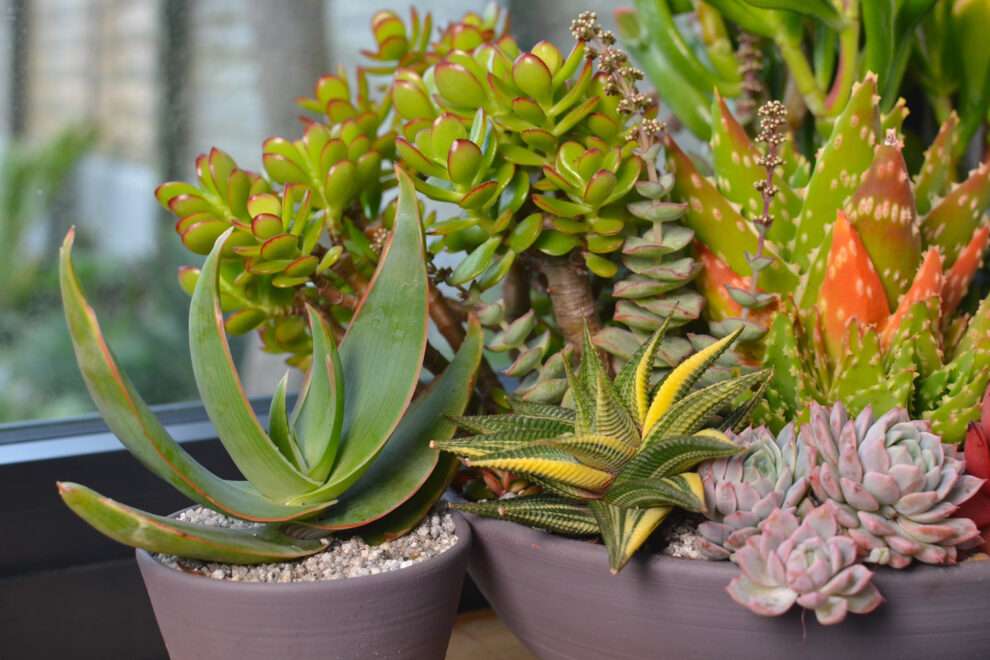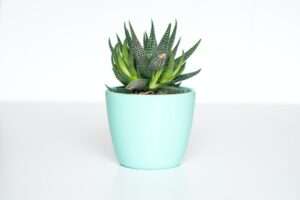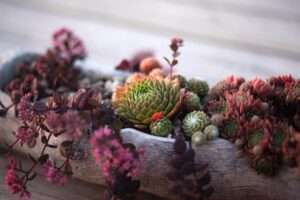
Succulents have gained popularity in recent years due to their unique and beautiful appearance, as well as their ability to thrive in various environments. However, it is important to remember that succulents are not invincible and can be susceptible to damage from cold weather. Protecting your succulents from the cold is crucial to ensure their survival and maintain their health.
Cold weather can be detrimental to succulents for several reasons. Firstly, succulents are native to warm and arid climates, so they are not naturally adapted to withstand freezing temperatures. Exposure to cold temperatures can cause the cells in the plant to freeze and burst, leading to irreversible damage. Additionally, succulents store water in their leaves and stems, which makes them more susceptible to frost damage. When water freezes, it expands and can cause the plant tissues to rupture.
Understanding the Threshold Temperature for Succulent Survival
Succulents have varying degrees of cold tolerance, depending on the species. While some succulents can tolerate temperatures as low as 20 degrees Fahrenheit (-6 degrees Celsius), others may only be able to withstand temperatures above freezing. It is important to research the specific cold tolerance of your succulent species to determine the minimum temperature it can survive.
The minimum temperature that succulents can survive varies depending on factors such as the duration of exposure, humidity levels, and the overall health of the plant. Generally, most succulents will start to show signs of damage when exposed to temperatures below 32 degrees Fahrenheit (0 degrees Celsius) for an extended period of time. However, even a short exposure to freezing temperatures can cause damage to more sensitive succulent species.
Factors that Affect Succulent Cold Tolerance
Several factors can affect a succulent’s ability to tolerate cold weather. One of the most significant factors is humidity. Succulents thrive in dry environments, and high humidity levels can increase the risk of frost damage. When the air is humid, it holds more moisture, which can freeze on the surface of the plant and cause damage.
Soil moisture is another important factor to consider. Overwatering succulents before cold weather hits can increase the risk of damage. When the soil is saturated with water, it can freeze and cause the roots to rot. It is important to ensure that the soil is well-draining and that excess water is able to escape.
Sunlight is also a crucial factor in succulent cold tolerance. Succulents require ample sunlight to thrive, and a lack of sunlight during the winter months can weaken the plant and make it more susceptible to cold damage. It is important to choose a location for your succulents that receives adequate sunlight, even during the colder months.
Identifying Cold Damage in Succulents
It is important to be able to identify signs of cold damage in your succulents so that you can take appropriate action to help them recover. One common sign of cold damage is discoloration or browning of the leaves. This can occur when the cells in the leaves freeze and die. Frost damage may also appear as black or brown spots on the leaves or stems.
Another type of cold damage that succulents can experience is sunburn. This occurs when succulents are exposed to intense sunlight after being kept in a shaded area for an extended period of time. Sunburned succulents may develop brown or white patches on their leaves.
Other signs of cold damage include wilting, soft or mushy leaves, and stunted growth. If you notice any of these signs, it is important to take immediate action to protect your succulents and prevent further damage.
Preparing Your Succulents for the Cold Season
To prepare your succulents for the cold season, there are several steps you can take. Firstly, it is important to gradually acclimate your succulents to colder temperatures. This can be done by gradually reducing the amount of sunlight and water they receive over a period of several weeks. This will help the plants adjust to the changing conditions and become more resilient to cold weather.
It is also important to ensure that your succulents are in good health before the cold season arrives. Healthy plants are better equipped to withstand cold temperatures and are less likely to suffer damage. Make sure your succulents are well-watered and fertilized before the onset of winter.
Additionally, consider moving your succulents indoors if you live in an area with extremely cold winters. Indoor environments provide more stable temperatures and protection from frost and freezing winds. Place your succulents near a window that receives ample sunlight or use grow lights to provide them with the necessary light.
Choosing the Right Location for Your Succulents
Choosing the right location for your succulents during the cold season is crucial to their survival. Ideally, you should place your succulents in a location that receives at least six hours of sunlight per day. This will help them maintain their health and prevent them from becoming weak and susceptible to cold damage.
In addition to sunlight, it is important to choose a location that provides protection from cold winds and frost. Cold winds can quickly freeze the moisture in the leaves and cause damage, so it is best to place your succulents in a sheltered area, such as against a wall or under an overhang.
If you live in an area with extremely cold winters, you may need to bring your succulents indoors or provide additional insulation. Consider using frost blankets or creating a makeshift greenhouse using plastic sheeting to protect your plants from freezing temperatures.
Insulating Your Succulents from the Cold
Insulating your succulents from the cold is an effective way to protect them from frost and freezing temperatures. One method of insulation is to use mulch. Apply a layer of organic mulch, such as straw or wood chips, around the base of your succulents. This will help insulate the soil and prevent it from freezing.
Another method of insulation is to use blankets or burlap to cover your succulents. Wrap the plants loosely in the material, making sure not to wrap them too tightly as this can restrict airflow and cause moisture buildup. The blankets or burlap will help trap heat and protect the plants from frost.
You can also create a protective barrier around your succulents using materials such as chicken wire or stakes. This will help shield the plants from cold winds and provide an extra layer of insulation.
Using Protective Coverings for Your Succulents
In addition to insulation, using protective coverings can further safeguard your succulents from the cold. Frost cloths are a popular choice for protecting succulents from freezing temperatures. These lightweight fabrics allow air and light to pass through while providing a barrier against frost. Simply drape the frost cloth over your succulents and secure it in place with stakes or rocks.
Plastic covers can also be used to protect succulents from the cold. However, it is important to use caution when using plastic covers as they can trap moisture and cause condensation, which can lead to fungal diseases. If using plastic covers, make sure to remove them during the day to allow for airflow and prevent moisture buildup.
Watering Your Succulents in Cold Weather
Watering your succulents correctly during the cold season is crucial to their survival. It is important to adjust your watering schedule to account for colder temperatures and reduced sunlight.
During the winter months, succulents enter a period of dormancy where their growth slows down. As a result, they require less water. Overwatering succulents during this time can lead to root rot and other issues. It is best to water your succulents sparingly, allowing the soil to dry out between waterings.
When watering your succulents, it is important to water the soil directly and avoid getting water on the leaves. Wet leaves are more susceptible to frost damage, so it is best to water early in the day to allow the leaves to dry before temperatures drop at night.
Post-Cold Care for Your Succulents: Recovery and Maintenance
After a cold snap, it is important to assess the damage and take appropriate action to help your succulents recover. Remove any damaged or dead leaves and stems to prevent the spread of disease. If the roots have been damaged, repot your succulents in fresh, well-draining soil.
Once your succulents have recovered from the cold, it is important to continue providing them with proper care and maintenance during the winter months. This includes ensuring they receive adequate sunlight, adjusting your watering schedule as needed, and protecting them from extreme temperature fluctuations.
Regularly inspect your succulents for signs of pests or diseases and take prompt action if any issues arise. Proper care and maintenance will help ensure the health and vitality of your succulents throughout the winter season.
In conclusion, protecting your succulents from cold weather is essential to their survival and overall health. Understanding the threshold temperature for succulent survival, considering factors that affect cold tolerance, identifying cold damage, and taking appropriate steps to prepare and care for your succulents during the cold season will help ensure their longevity and beauty. By providing adequate insulation, choosing the right location, using protective coverings, adjusting watering schedules, and providing post-cold care, you can enjoy thriving succulents year-round.
If you’re a succulent lover, you may be wondering how cold is too cold for your beloved plants. Well, we’ve got you covered with an informative article that explores the ideal temperature range for succulents and how to protect them during chilly weather. Check out “The Ultimate Guide: How Cold is Too Cold for Succulents” to ensure your succulents thrive all year round.

















Add Comment